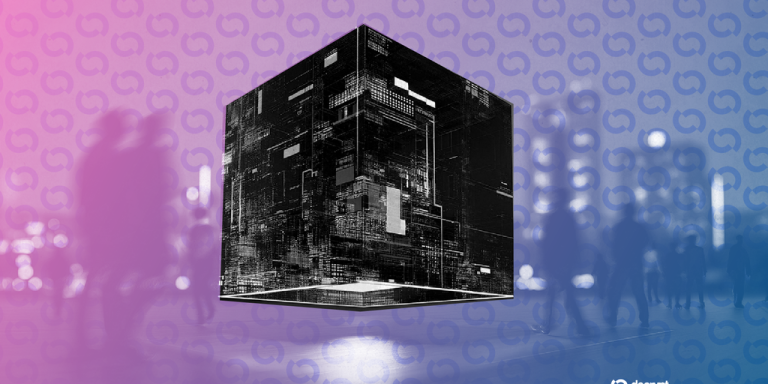In brief
- A trio of scientists shared the 2025 Nobel Prize in Physics for proving quantum behavior can occur in ordinary circuits.
- Their 1980s experiments enabled superconducting qubits—the foundation of today’s quantum computers.
- The prize, decades after discovery, affirms the long arc from lab curiosity to industry-defining technology.
Three scientists whose experiments proved that the strange rules of quantum mechanics can govern ordinary electrical circuits—a discovery that later made quantum computers possible—were awarded the 2025 Nobel Prize in Physics on Tuesday.
The Royal Swedish Academy of Sciences honored John Clarke of the University of California, Berkeley, Michel Devoret of Yale University, and John Martinis, formerly of Google’s Quantum AI lab, “for the discovery of macroscopic quantum mechanical tunneling and energy quantization in an electric circuit.”
Working through the late 1970s and 1980s, the trio showed that superconducting loops cooled near absolute zero could behave like oversized artificial atoms—jumping between discrete energy levels and “tunneling” through barriers in ways once thought limited to subatomic particles.
Their results turned a theoretical curiosity into practical hardware. By proving that quantum behavior could be engineered, they laid the groundwork for superconducting qubits, the core components now used in prototype quantum computers built by Google, IBM, and others.
Until Clarke, Devoret, and Martinis did their experiments, quantum mechanics—the physics of uncertainty, tunneling, and superposition—was something scientists could observe only in tiny systems like atoms or photons. Nobody knew if those effects could survive in something big enough to build a circuit out of.
What they proved is that you can engineer a circuit—wires, loops, Josephson junctions—that still behaves quantum mechanically. Those circuits can hold information in a quantum state, which is exactly what a qubit does. (A qubit, short for quantum bit, is the basic unit of information in a quantum computer. Unlike a classical bit that’s either 0 or 1, a qubit can exist in a “superposition” of both states at once, enabling quantum machines to process many possibilities simultaneously.)
Without the ability to make quantum circuits, there’d be no quantum computers. The experiments linked the invisible quantum world to the tangible devices on a lab bench.
“I’m completely stunned. Of course it had never occurred to me in any way that this might be the basis of a Nobel Prize,” Clarke told the Nobel press conference by telephone. “I’m speaking on my cell phone and I suspect that you are too, and one of the underlying reasons that the cell phone works is because of all this work.”
The trio will equally split a cash prize of 11 million Swedish kronor, or about $1.17 million USD.
A prize decades in the making
The recognition arrives roughly four decades after the original work, reflecting the Nobel Committee’s tendency to wait until an idea’s full impact is undeniable. Physics Nobel Prizes often arrive late:
-
The 2017 prize for gravitational-wave detection followed work begun in the 1970s.
-
The 2020 black-hole prize traced back to 1960s theory.
-
Even Einstein’s 1921 award cited a 1905 paper.
This long-lag model acts less like a “lifetime achievement” trophy than a confirmation that an idea truly reshaped a field. In this case, what once seemed a niche curiosity—quantum effects in “macroscopic” circuits—has become the backbone of a multibillion-dollar quantum-tech industry.
Over the past few years, superconducting-qubit machines have performed early chemistry simulations and cryptographic tests, signaling that a once-esoteric branch of physics now powers real devices. Recognizing its experimental roots reinforces that today’s “quantum boom” stands on painstaking cryogenic and circuit-design work from the analog era.
The selection was widely expected and broadly welcomed. Some observers thought theorists behind quantum-error-correction codes might share the stage, but few dispute that Clarke, Devoret, and Martinis supplied the essential proof that circuits could act quantum.
The bigger picture
Quantum computing poses both a threat and an opportunity for crypto. On one hand, powerful quantum machines could eventually break today’s public-key cryptography—the RSA and elliptic-curve algorithms that secure Bitcoin wallets, blockchain signatures, and internet transactions—by factoring large numbers or solving discrete-log problems exponentially faster than classical computers.
On the other hand, quantum principles also enable post-quantum cryptography (classical algorithms resistant to quantum attacks) and quantum key distribution, which uses entanglement to detect eavesdropping and promise provable secrecy.
By celebrating experiments that bridged the quantum and classical realms, the Academy reaffirmed a familiar Nobel theme: transforming paradox into practice. What began as “quantum weirdness” in textbooks became the foundation of an emerging industry worth billions.
Generally Intelligent Newsletter
A weekly AI journey narrated by Gen, a generative AI model.


